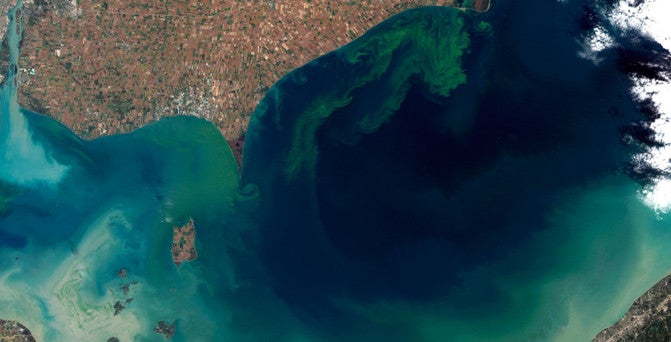
A coalition of 10 US-based organizations is appealing to the EPA to declare Lake Erie as an “impaired” water body and reduce the annual inflow of nutrients that lead to harmful algae blooms.
Severe algal blooms in recent years have contaminated drinking water, closed beaches, and led to widespread fish kills. The economic impact of algal blooms on the recreational boating, fishing and tourism industries for the state of Ohio alone has been pegged at more than $12.9 billion
Having even just the shallow west end of Lake Erie declared as “impaired” under the Clean Water Act would empower regulatory agencies to better limit algal-bloom-causing pollution, such as agricultural runoff, from entering the lake.
In an open letter to EPA Water Division Director Tinka Hyde, the group says delays in dealing with the Lake Erie algae problem are unacceptable, charging “EPA has failed in its duty to protect Lake Erie and the people and wildlife which depend upon it.” Signatories include the Lake Erie Charter Boat Association, the Alliance for the Great Lakes, Freshwater Future, the Izaak Walton League of America, American Rivers, the Environmental Law & Policy Center, Lake Erie Waterkeepers, the Lake Erie Improvement Association, the National Wildlife Federation, and the Ohio Environmental Council.
Last year the International Joint Commission recommended Lake Erie be designated as an impaired water body under the Clean Water Act after algal blooms left more than 400,000 Toledo residents without drinking water for nearly three days. The designation would require the EPA to determine the precise source of contaminants, and empower agencies to limit the quantities of contaminants entering the lake. Agricultural runoff is suspected of being a key contributor to algae growth. In the 1950s and 60s, phosphorus runoff from farms produced substantial algal blooms until changes in farming practices allowed Lake Erie to make a remarkable recovery beginning in the 1970s.
Much of the phosphorus in the lake today is believed to come from fertilizer applied to no-till soybean and corn fields, which is subsequently washed into streams by rainfall. The algal blooms result from growth of Microcystis, a toxic blue-green algae that nothing in the lake eats, including zebra mussels. The accumulation of dead and decomposing algae periodically leaves Lake Erie with a “dead zone” – an area of water with insufficient oxygen levels to support life.
The 2014 Lake Erie algal bloom was substantial enough to be clearly visible from space, and was photographed by astronauts on the International Space Station.
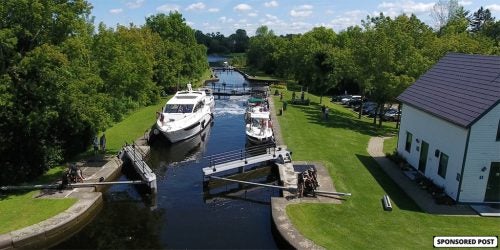
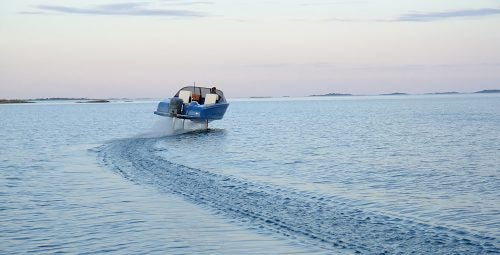



 Fort Lauderdale International Boat Show Preview
Fort Lauderdale International Boat Show Preview 10 Best New Boat Accessories at IBEX 2021
10 Best New Boat Accessories at IBEX 2021 2022 Sea-Doo Switch Pontoon Boat Lineup Unveiled
2022 Sea-Doo Switch Pontoon Boat Lineup Unveiled BRP Enters Fishing Boat Market with Purchase of Alumacraft Boat
BRP Enters Fishing Boat Market with Purchase of Alumacraft Boat Volvo Commits To Electric Power By 2021
Volvo Commits To Electric Power By 2021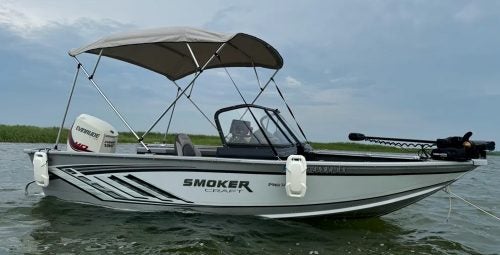 Kemimoto 4 Bow Bimini Top and Boat Bumper Review
Kemimoto 4 Bow Bimini Top and Boat Bumper Review Starweld Victory 20 Review
Starweld Victory 20 Review Princecraft Ventura 23 RL Review
Princecraft Ventura 23 RL Review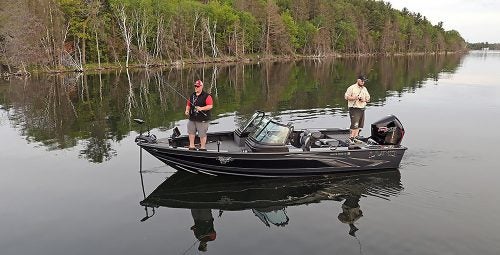 Lund 2075 Pro V Review
Lund 2075 Pro V Review Scout 281 XSS Review
Scout 281 XSS Review Fuel Saving Tips For Boaters
Fuel Saving Tips For Boaters Best Boating Accessories
Best Boating Accessories Best Boating Apps
Best Boating Apps 5 Pontoon Boats That Are Made To Fish
5 Pontoon Boats That Are Made To Fish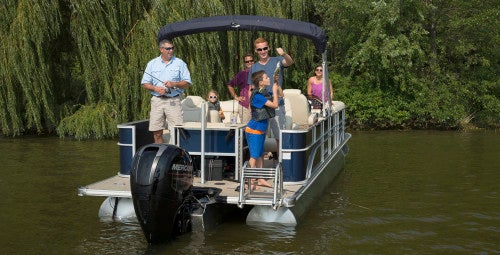 10 Great Small Pontoons
10 Great Small Pontoons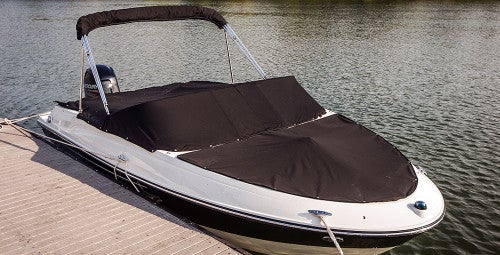 Your Boat Was Expensive—Do You Really Trust a $2 Rope From the Dollar Store to Secure It?
Your Boat Was Expensive—Do You Really Trust a $2 Rope From the Dollar Store to Secure It? Do I Need Insurance Coverage Against Ice or Freezing Damage?
Do I Need Insurance Coverage Against Ice or Freezing Damage? What Kind Of Insurance Coverage Do I Need?
What Kind Of Insurance Coverage Do I Need?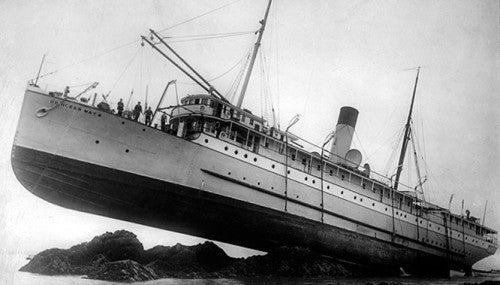 What About Salvage?
What About Salvage? Boat Insurance or Yacht Insurance?
Boat Insurance or Yacht Insurance?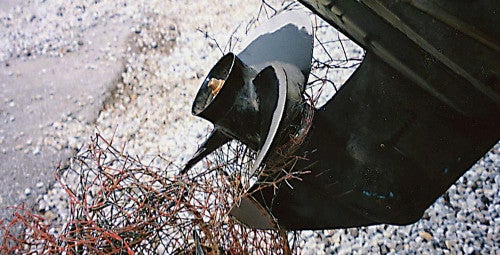
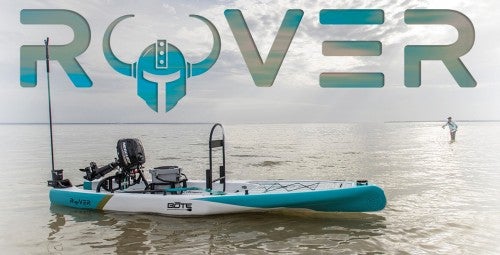
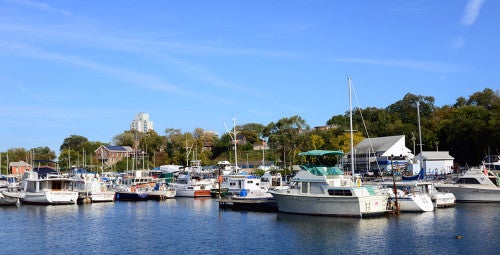

 The Best Bowriders For The Money
The Best Bowriders For The Money
 Sailfish 312CC Review
Sailfish 312CC Review
 The Wildest Concept Yachts
The Wildest Concept Yachts
 2016 Trifecta 200 Series 220FCR
2016 Trifecta 200 Series 220FCR 2016 Harris Grand Mariner SL 270 DL
2016 Harris Grand Mariner SL 270 DL 2016 Crestliner Authority 2050
2016 Crestliner Authority 2050 2016 Harris Grand Mariner SL 230 DLDH
2016 Harris Grand Mariner SL 230 DLDH
